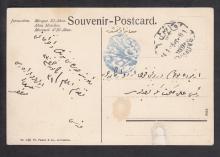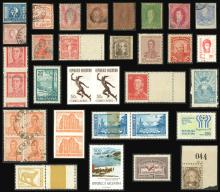Charles Darwin Stamps - A Look through the Life of a Naturalist
Published

Charles Darwin is one of the favourite subjects for stamps around the world. But are you aware of the reasons that make him a favourite subject? To get a good understanding of the stamps issued on his behalf, it is important to first trace his early life.
Charles Darwin was inspired by his father to take up medicine, and thus chose to attend Edinburgh University. From an early stage Darwin showed passion and interest in wildlife and natural history. He made notes and casual observations, and these activities made him realize that medicine was not for him. When there was an opportunity to join a natural history expedition to Madeira Islands, Darwin took the chance and made all the necessary preparations. His stint in this trip and the preparations that he made allowed him to become a naturalist on board a survey vessel.
Geographical Areas Named After Darwin
As part of the team that surveyed the South American coast and the Galapagos Islands, Darwin, together with the rest of the team headed by Captain Robert FitzRoy, studied the plants and wildlife that were found in the area. During the 5 year expedition, from 1831 to 1836, he managed to collect some fossils to back up the observations and notes. It was even noted that at one point, he managed to save some of his team members from a collapsing glacier. His effort did not go unnoticed - the team honoured his gallant efforts, and the captain named some of the geographical areas they visited in honor of Darwin. Some of these areas include Mount Darwin found in Andes and a settlement in Australia.
Forming the Well-Known Theory
When the trip ended, he used his notes and fossils collected to compile his ideas and solidify his assertions that evolution among animal and plant life happened through natural selection, occurring over millions of years. He subsequently wrote many papers and delivered many talks, but his academic efforts temporarily stopped in 1837 due to health concerns. He was back in his research in January 24, 1839 when he was named as fellow of the Royal Society of the Improvement of Natural Knowledge. Though he already formed the foundations of his theory, he did not immediately disclose this to people close to him due to their personal beliefs.
Presentation of Origin of Species
The stress and the pressure took a toll on his health once more, and this was only addressed when another naturalist, Alfred Russel Wallace, supported his claims publicly. Thanks to this academic and morale boost, he managed to announce his findings for The Origins of Species.
Darwin’s Later Life
Darwin’s health suffered through the years, and it was thought that his illness was caused by an insect bite he got when exploring South America. He died on April 19, 1882 in Downe, Kent. His life may have ended, but his contributions to science remained up until this day. Charles Darwin’s life and contributions in natural sciences are immortalized not just in books but also in commemorative stamps made available around the world. On the 200th Anniversary of his birth, the Royal Mail delivered Darwin stamps - six diverse selection of stamps that showcase different aspects of his life and research. There was also an issuing of a First Day Cover featuring a mini-sheet, as well as the Charles Darwin 1809-1882 Prestige Stamp Book.







